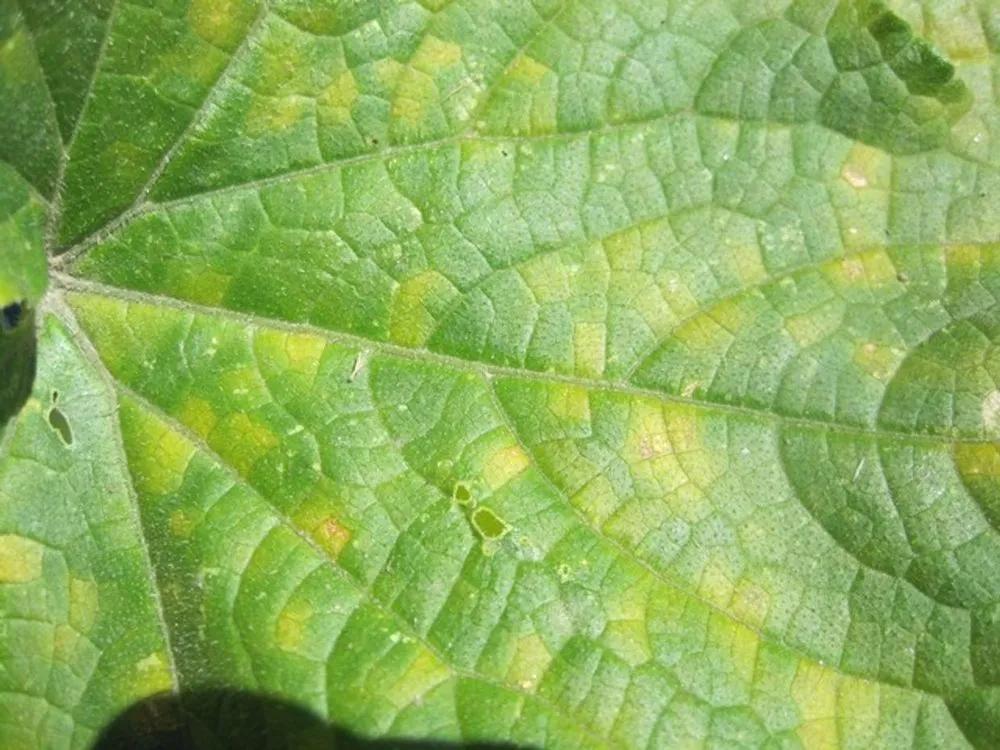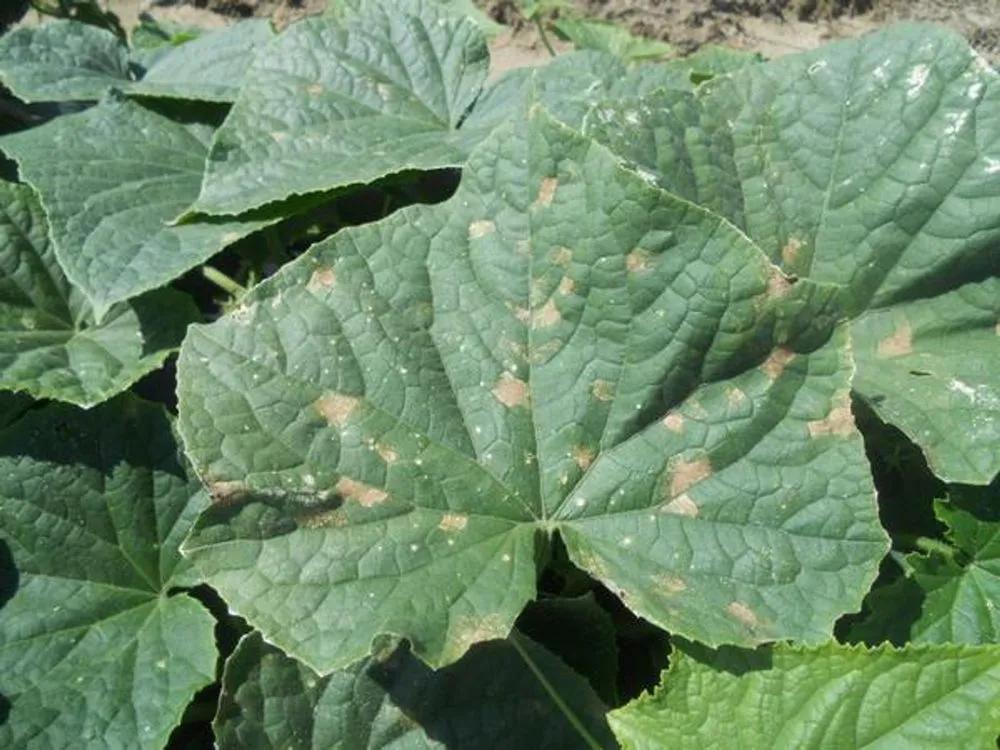Downy mildew is a plant pathogen that causes downy mildew on crops such as cucumber, melon, squash, watermelon, and squash that belong to the Peronosporaceae family. The biological causative agent is the obligate parasitic plant cubensis. The causative agent is resistant, persists in infected plant debris, surviving in cold weather. In spring, at a temperature of 59-68 °F (15–20 °C), infected seeds germinate, from which zoospores emerge, which spread to healthy plants. In most cases, the disease occurs in poorly ventilated and damp conditions. Factors such as sudden fluctuations in ambient temperature and heat can also provoke the rapid development of this disease in plants.
Downy Mildew of Cucurbits



Signs of damage
- First, the affected leaves acquire a mottled color;
- Then light yellow spots in an angular shape, in the form of islands between the small veins of the leaf structure, appear;
- Gradually, the yellow islands merge into one large yellow-brown or brown spot.
- White-gray (or sometimes purple) fluffy fungal coating forms on the lower part of the leaf;
- The leaves die;
- Fruit development is severely deterred.
How to prevent
It is worth knowing that no matter what methods of preventing this disease are used, none of them can be guaranteed to prevent it. It is important for cultivation to take varieties resistant to this disease. Pay attention to the leaves to identify the symptoms as soon as possible and start to act. Fertilization is another option you should not omit. Always remember to spray your cucurbit crops with fungicides on time. As is the case with many other crops, it is important to remove and destroy all post-harvest residues. Also, when landing, remember the extreme importance of spatial isolation as a preventive measure against the downy mildew.
Heal
At the first sign of illness, stop watering. At the earliest stage of the disease, remove the affected parts (leaves) to prevent the further spread of the fungus. It is necessary to cut out all diseased parts of plants, dipping the pruner blade into a solution of fungicide and potassium permanganate. You may also spray the plant with a soda ash solution.
Go Premium to continue reading
Also you’ll get unlimited access to disease identification and all the other beneficial features
More problems
